How to Wear the 6 Thinking Hats to Make Better Decisions
You have just been nominated to chair the committee to plan your 10th high school reunion. “Yikes!” you say to yourself as you contemplate what all this entails. Luckily, the committee has 5 other members who were appointed prior to graduation, so at least you don’t have to find help. Seeing as how you only have a year to plan the shindig, you feel a bit overwhelmed. But then you tell yourself you were picked to do this for a reason – because you can and will make it happen!
Your first order of business is to get the group together at a local watering hole one evening for a first informal meeting to get reacquainted with each other. By the end of the night, you have agreed as a group that you will meet every 2 weeks, at least initially until you are comfortable with where you are and where you are headed. The committee is comprised of an interesting cast of characters and you are wondering how the hell you are going to be able to handle the different personalities and ideas. You conclude the meeting by setting only one agenda for the next meeting, and it is an important one – which is to select a date for the reunion.
You are walking to you Uber after the meeting when you come across this lovely woman…

…and suddenly, it hits you!
NO! Not the urge to buy a burrito from her burrito cart which is strategically placed on the sidewalk outside all the bars to satisfy your alcohol-fueled case of the munchies. Not at all!!
Instead, her colorful hat brings you back to your senior year of college where your management professor taught you about a thinking technique called 6 Thinking Hats!
“That’s it!” you tell yourself. You can use the 6 thinking hats method at your next meeting to help select the date for the reunion.
Since it’s been a while, you decide to dust off that copy of Six Thinking Hats by Edward de Bono that has been collecting dust on your bookshelf to get reacquainted with it. It’s the book sitting right beside the collector’s edition of the Kama Sutra, which sadly is just as dusty, and has been used just as much.
Everything comes back to you quickly as you start reading through the book. You quickly recall that…
The 6 Thinking Hats…
Is a technique invented by Edward de Bono, considered by many to be the father of creative thinking, innovation, and teaching better thinking. It is a technique that helps you look at decisions from a multitude of perspectives. This causes you to step outside your usual thinking or decision-making style to come up with a more rounded or well-balanced decision or solution. Typically, the 6 thinking hats method is used by groups, but it can also be used individually to make sure that you have considered all aspects of an issue equally. It can be used as a tool to solve problems, to plan events, for strategic planning, or as a way to run meetings.
This is How it Works…
When working through a problem, the collective group puts on each metaphorical hat one at a time to consider different aspects of the problem. The 6 thinking hats, which we will get into in a bit more depth in a bit, are as follows:
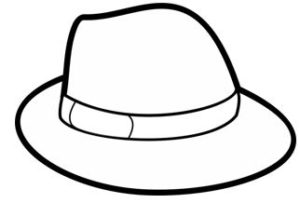
White hat: looks at the data and information available.
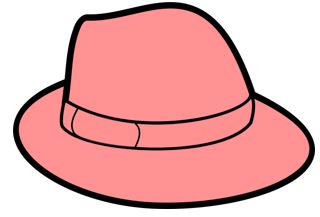
Red hat: takes an emotional view of the issue.
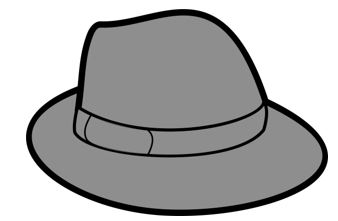
Black hat: looks at the negative aspects of the issue.
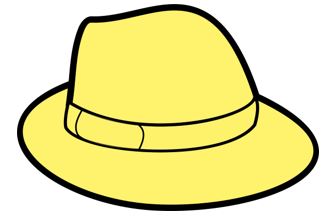
Yellow hat: reviews the positive aspects of the issue.
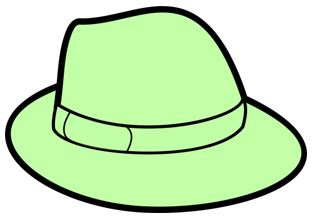
Green hat: looks for creative solutions or alternatives.
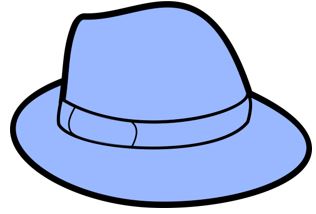
Blue hat: exercises control over the thinking process.
So, at any one time, everyone on the team is wearing the same color hat and looking at the issue from the same perspective.
Why It Works
Having everyone thinking in the same direction means that the team is engaged in what de Bono calls ‘parallel thinking’ as opposed to ‘adversarial thinking’. Whereas adversarial thinking is based on a more argumentative style aimed only at discovering the truth, parallel thinking helps groups attain creative and well-rounded solutions by cooperating and collaborating.
To be more specific, the 6 thinking hats method leverages parallel thinking to get everyone looking in the same direction at each step of the process, this ensures:
 Everyone is speaking the same language.
Everyone is speaking the same language.
 Egos are removed – according to de Bono it “separates ego from performance”. And it helps block confrontations that can occur when people with different thinking styles discuss an issue.
Egos are removed – according to de Bono it “separates ego from performance”. And it helps block confrontations that can occur when people with different thinking styles discuss an issue.
 You are leveraging the diversity of the group and each person’s intelligence and experience.
You are leveraging the diversity of the group and each person’s intelligence and experience.
 That people think differently than they usually would. For example, someone who is always optimistic will need to consider negative aspects of an issue. Or someone who is always rational will need to consider the emotional viewpoint.
That people think differently than they usually would. For example, someone who is always optimistic will need to consider negative aspects of an issue. Or someone who is always rational will need to consider the emotional viewpoint.
 Focus – you aren’t jumping all over the place as you are moving through the hats systematically looking at each perspective together.
Focus – you aren’t jumping all over the place as you are moving through the hats systematically looking at each perspective together.
 Decisions have a healthy mix of creativity, emotion, ambition and sensitivity due to the fact you have looked at all aspects of an issue – the facts, the good points, the bad points, the positive and negative aspects, and creative alternatives.
Decisions have a healthy mix of creativity, emotion, ambition and sensitivity due to the fact you have looked at all aspects of an issue – the facts, the good points, the bad points, the positive and negative aspects, and creative alternatives.
 The red and green hats allow you to say inappropriate things which can be corrected by the black hat.
The red and green hats allow you to say inappropriate things which can be corrected by the black hat.
Now that you have been refreshed on what 6 thinking hats method is and why it works, let’s look at…
How You Put the 6 Thinking Hats into Practice to Organize Your Reunion
The key to utilizing the 6 thinking hats is to have a good facilitator to keep things moving and to keep everyone focused – in this case, you are playing that role!
Again, at the first meeting, you decided that the very first thing you need to collectively do is to select a date for the reunion. That way you can create a timeline, secure a venue, send out invites etc. As part of your second meeting, you have decided to utilize the 6 thinking hats technique. After explaining the process of the 6 thinking hats and how it will work to the committee, you start with everyone wearing the
White Hat…
and looks at a list of potential dates suggested by the alumni office. There are 10 potential dates, 5 in the Fall and 5 in the Spring. You agree that you will need to select a date ASAP, so people can get it on their calendars early. However, you have no idea about which date people prefer, so you will need to figure out how to get that information.
Next, you move on to the
Green Hat…
to look at some ideas on how to figure out everyone’s preferred date. Someone on the committee suggests creating a Facebook Group, another suggests using Survey Monkey, and another suggests using a Doodle poll. All good ideas!
You move to the
Yellow Hat…
to look at the benefits of the ideas. Creating a Facebook Group would allow you to upload photos and to manage the whole event from now until the event takes place. Using Survey Monkey would be pretty easy to set up and utilize. And using Doodle would let you specify the exact dates and times and to get instant results.
Next, you all put on the
Black Hat…
and look at why each may not work. While the Facebook Group is a good idea, not everyone is on Facebook. In terms of Survey Monkey, someone points out that only the email sent by Survey Monkey can track who responds, so if the email is forwarded you won’t be able to track the respondent. As for using a Doodle poll, the only real drawback is that there are ads you have to look at because it is free. As for the 10 dates themselves, someone points out that this is too many and it may be good to narrow it down to 5.
You then put on the
Red Hat…
to discuss gut feelings, emotions and fears. One of the women seems to really dislike the Facebook idea, she says several people ‘may’ have hooked up since graduation and are trying to avoid each other. Since she is a bit of a floozy you think she may be speaking from personal experience. Just as you are about to say something you remember that the Red Hat is all about letting emotions out without judging, so you stop yourself before saying anything critical.
Finally, you put on the
Blue Hat…
to draw conclusions and formulate next steps. You decide to go with the Doodle poll as it is the most straightforward and it is free, which aligns nicely with your limited budget. People can put up with the annoying ads as they aren’t a showstopper.
The meeting concludes and using the 6 thinking hats ends up being a resounding success that helps you come up with a great solution. You agree to meet in 2 weeks to review the results from the poll and to discuss using 6 hats thinking to help find a venue.
As you are walking home (yes you live close to the beach) you come across this sign:

And suddenly it hits you!
You forgot to go home and let your Shih-Tzu puppy out at lunchtime. Usually, your spouse does it, but they are out of town and the dog hasn’t been out all day.
The last time this happened you went home to a veritable Shih-Tzu-storm!
If only you had put on the ‘Brown Hat’ before your spouse talked you into getting that damn dog!
Until next time, keep wearing those 6 hats, remember sometimes Shih Tzu happens, and as always…PYMFP!
–Rick
More Detail on Using the 6 Thinking Hats – Use it or Lose It
There are 2 ways to use the hats:
 You can use them individually. For example, perhaps you want everyone to play Devil’s advocate during a meeting, so you get everyone to put on the Black Hat.
You can use them individually. For example, perhaps you want everyone to play Devil’s advocate during a meeting, so you get everyone to put on the Black Hat.
 You can use them sequentially, typically the sequence looks like this as how you did it for your reunion:
You can use them sequentially, typically the sequence looks like this as how you did it for your reunion:
 Blue: Introduction
Blue: Introduction
 White: Data and Information
White: Data and Information
 Green – Alternatives and ideas
Green – Alternatives and ideas
 Yellow – Benefits of ideas
Yellow – Benefits of ideas
 Black – Negative aspects of ideas
Black – Negative aspects of ideas
 Red – Feelings about ideas
Red – Feelings about ideas
 Blue – Conclusions and next steps
Blue – Conclusions and next steps
If you use them sequentially, you can use them in whatever order you want. Typically, you start and end with the Blue Hat. Usually, you then use the White Hat to look at the facts, but sometimes you may want to instead go with the Black Hat to get the negative thoughts out or the Green Hat to get all the alternatives on the table. It depends on the situation and the people in the room.
Everyone MUST wear the same hat at the same time. You can not use hats to categorize people even if their behavior invites it!
You don’t have to use every single hat, again it depends on the situation and the people in the room.
Usually, the time for each hat is short, a few minutes for each and a bit more for the Blue Hat at the end.
Some more specifics for using each hat:
Blue Hat:
Typically, you start and end with the Blue Hat. At the start, it is where you define the problem, discuss what you want to achieve, present any background information and outline the way the hats will be used as well as their sequence.
White Hat:
The White Hat reviews all information and data available absent of feeling and emotions. It helps you understand what you know, what you don’t know and what you still need to know so you can fill in the gaps.
Green Hat:
The Green Hat is all about creativity and coming up with new ideas and alternatives. You can utilize techniques such as lateral thinking to come up with creative new solutions to problems.
Yellow Hat:
The Yellow Hat takes a positive spin on the issue and looks at things with a glass-half-full mentality. It takes an optimistic look at best-case scenarios and potential opportunities and keeps you going when things look gloomy.
Black Hat:
The Black Hat is an opportunity to be critical and pessimistic. It is where you point out why an idea may not work, and it is your chance to be cautious and careful. It helps you find weak points or fatal flaws before they happen, so you can eliminate them or create contingency plans.
Red Hat:
The Red Hat is where you go with ‘your gut’ and let your emotions out. This is where your hunches and intuition appear. There is no need to justify anything that is said, as this is all about emotions and feelings. It can also help you project how people may react to your decision.
Blue Hat:
Finally, you use the Blue Hat again to end things by making a decision summarizing what has been achieved, the outcome and solution as well as next steps.
When to Use It:
You can use 6 thinking hats as a solitary or group tool for:
 Problem-solving.
Problem-solving.
 Planning events.
Planning events.
 Strategic planning.
Strategic planning.
 Running meetings.
Running meetings.
What Do You Think?
Have you ever used the 6 thinking hats? How did you use it? Please share your experiences in the comments below!
If you enjoyed this post, it would mean the world to us if you shared it with people you care about via any of the social media platforms below!
Popular Previous Posts:
How to Find a Mentor in Your Life!
This is How I Learned How to Learn Faster
Investing in Yourself: This is How I Sharpen the Saw
This is How I Used Habit Stacking to Make My Bed
The Eye in the Sky Never Lies: Handling Constructive Criticism
References
De, Bono E. Six Thinking Hats. Boston: Back Bay Books, 1999. Print


I have not heard of this method previously. It’s easy to understand how it works. Seems like there needs to be some visual aid to remind everyone of the appropriate color – such as holding up a sign on green paper that says “Ideas and Alternatives”. Just a thought to keep people focused.
I have never been to a high school reunion, and seriously doubt that my high school even knows if I’m still alive.
Totally busted out laughing at the shih tzu pic. As did my CYT, who worked as a vet’s assistant for 17 years. She’s going to forward it to a few of her cronies.
Hi Dave, Yeah the 6 thinking hats are a pretty straightforward and disciplined methodology. Great catch on the visual aid, I forgot to mention that – it depends on the facilitator and he/she is certainly able to use any type of visual aid to keep people focused. Lol on the HS reunion! Yeah, the Shih-Tzu pic made me laugh too, the things you find on the internet these days! Be good, Rick